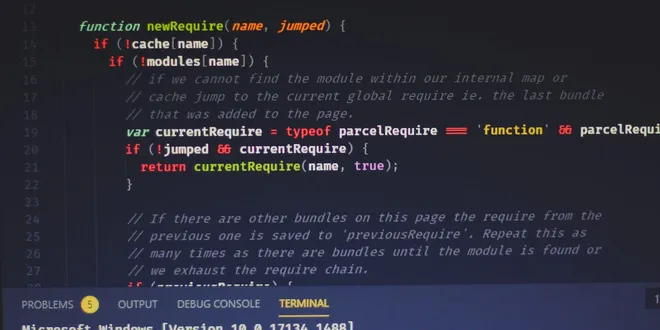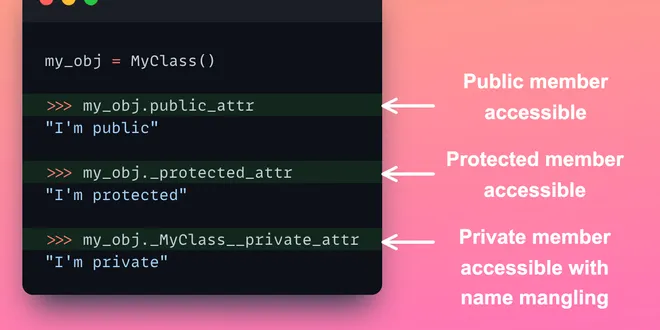Encapsulation Python
Encapsulation in Python is a fundamental concept of object-oriented programming (OOP) that involves bundling data and methods that operate on that data within a single unit, known as an object. This principle helps to restrict access to the internal workings of an object, promoting data hiding and protecting the object’s internal state from unintended modifications by external code. By using encapsulation, developers can create more modular, maintainable, and reusable code. In Python, encapsulation is typically implemented through the use of public and private attributes, allowing for controlled access to an object’s properties and methods, thereby enhancing code integrity and organization.

Mastering Encapsulation in Python: The Key to Robust and Maintainable Object-Oriented Code in…
Encapsulation is one of the fundamental principles of object-oriented programming (OOP) and plays a crucial role in building robust, maintainable and reusable code. At its core, encapsulation is about...
📚 Read more at Python in Plain English🔎 Find similar documents

Python Encapsulation: Private and Public Attributes
Table of Contents 1. Introduction 2. What is Encapsulation? 3. How to Define Private and Public Attributes in Python 4. How to Access Private and Public Attributes in Python 5. Why Use Encapsulation i...
📚 Read more at Python in Plain English🔎 Find similar documents

5.2 Classes and Encapsulation
When writing classes, it is common to try and encapsulate internal details. This section introduces a few Python programming idioms for this including private variables and properties. Public vs Priva...
📚 Read more at Practical Python Programming🔎 Find similar documents

Why Python Does Not Offer True OOP Encapsulation
Using access modifiers (public, protected, and private) is fundamental to encapsulation in OOP. Yet, Python, in some way, fails to deliver true encapsulation. By definition, a public member is accessi...
📚 Read more at Daily Dose of Data Science🔎 Find similar documents

Clean you Code with Encapsulation
I recently realized that one concept seems to transcend multiple programming paradigms: encapsulation. Logic and data can be encapsulated in variables, functions, classes, and modules/packages. How…
📚 Read more at Level Up Coding🔎 Find similar documents

Python Does Not Fully Deliver OOP Encapsulation Functionalities
...and what we must always obey as programmers.
📚 Read more at Daily Dose of Data Science🔎 Find similar documents

Unboxing Python Packaging: A Deep Dive into PyPI, Setuptools, and More
In the vast, vibrant realm of Python development, there’s an art, almost alchemical in nature, that often remains behind the curtains — Python packaging. Imagine writing a stellar piece of code, a dig...
📚 Read more at Level Up Coding🔎 Find similar documents

Best Practices for Implementing Encapsulation in Java Programming
Encapsulation is a fundamental concept in object-oriented programming that emphasizes data hiding and protection. The basic idea behind encapsulation is to keep the implementation details of an object...
📚 Read more at Javarevisited🔎 Find similar documents

Packaging Python Libraries
Real artists ship. Or so says Steve Jobs. Do you want to release a Python script, library, framework, or application? Excellent. The world needs more Python code. Python 3 comes with a packaging frame...
📚 Read more at Dive into Python 3🔎 Find similar documents

Encapsulation in Java: Understanding Its Importance and Benefits
Encapsulation is one of the four fundamental principles of object-oriented programming (OOP) that describes bundling data and the methods that operate on that data within a single unit called a class....
📚 Read more at JavaToDev🔎 Find similar documents

Unlocking Python Code Obfuscation: Protect Your Code Like a Pro!
Have you ever wondered how to protect your Python code from prying eyes? If you develop applications or scripts in Python, you’re likely concerned about the security and privacy of your work. Often, s...
📚 Read more at The Pythoneers🔎 Find similar documents

Python under the hood
What is an Abstract Syntax Tree (AST)? Think of an AST as the DNA of your code. It’s a tree representation that breaks down your code into its fundamental components. Each node in this tree represents...
📚 Read more at Python in Plain English🔎 Find similar documents

